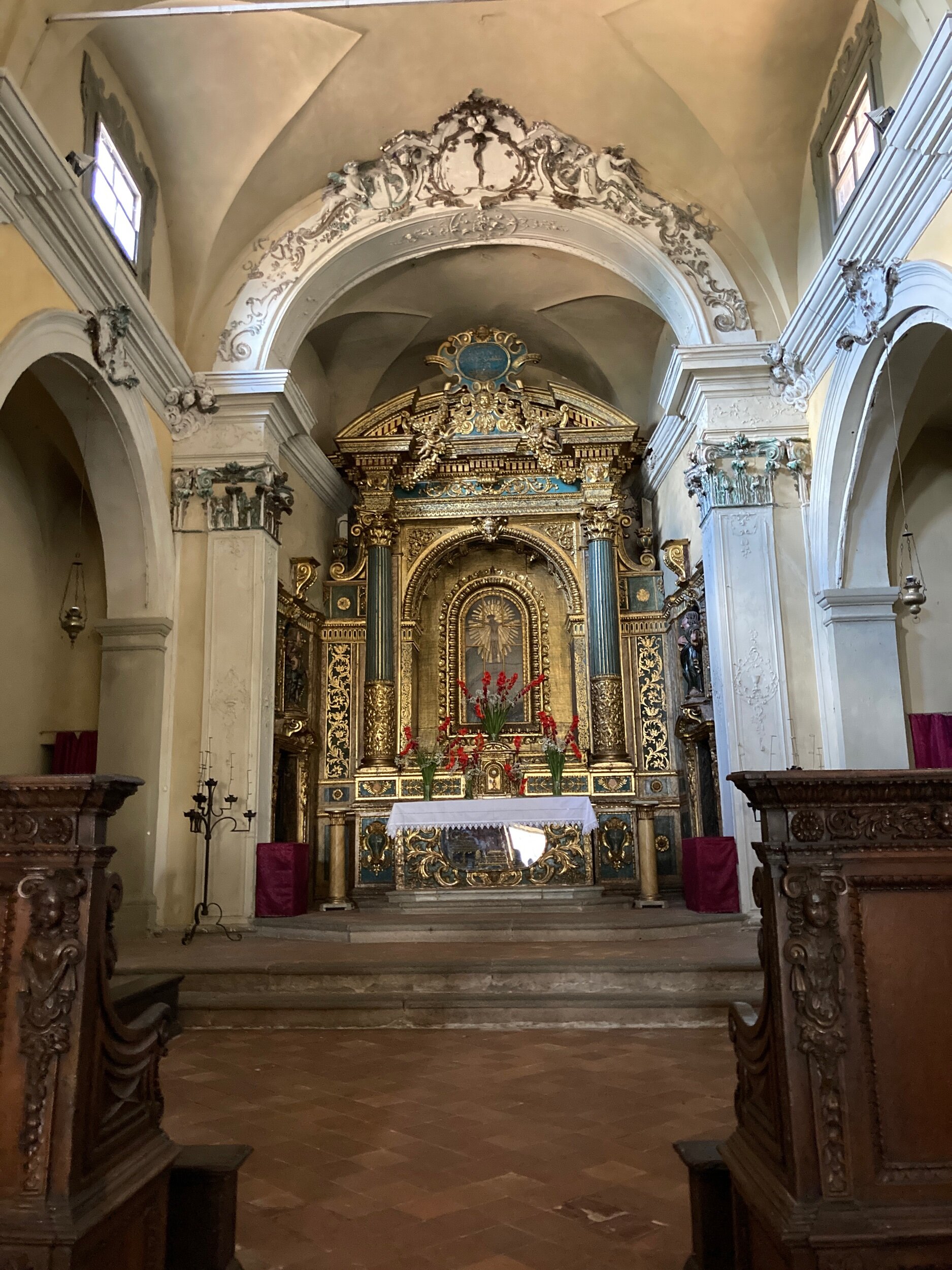An Afternoon in Barga
Up in the Garfagnana, about an hour from Lucca, lies the village of Barga. Tucked away on a hilltop, far from the typical tourist route, Barga is a quiet corner of Tuscany that maintains much of its medieval character. Barga is so picturesque that it has been included on the list of Borghi Piu Belli d’Italia (Most Beautiful Villages in Italy list). I have to agree!
The winding, narrow lanes are lovely and, due to its position high on a hilltop, Barga also serves up an expansive landscape. The town is surrounded by forests, the Serchio River valley, and the not-too-distant peaks of the Apuan Alps. The views over the countryside are best enjoyed from the terrace in front of the Duomo (Church of San Cristofero). Such a wonderful reward after walking up to the church at the top of the hill.
The view from the terrace in front of the Duomo in Barga
Barga began as a walled castle town and some of the original gates to the city remain. Entering through one of those gates, the Porta Reale, the journey through town meanders past small squares, steep medieval streets, fascinating architecture, small vicoli (alleys) with surprising views, and interesting landmarks. All this and the sound of churchbells ringing!
In an interesting twist, Barga is also a town with strong links to Scotland. This connection developed in the early 20th century when many families from Barga emigrated to Scotland in search of work. In the years that followed there was a reverse flow of their descendants back to Barga either to live or to establish second homes. It is not unusual to hear Scottish accents and even bagpipes in Barga. Each summer Barga puts on the Sagra del Pesce e Patate (loosely translated as the Festival of Fish and Chips). Definitely a Scottish twist there! I’ll have to include that in my plans next year.
Of course Barga also has a foot in the modern world, so there is art to be appreciated, summertime music festivals (Jazz and Opera) and plenty of shops and cafes. These more modern amenities served my friends (visitors from New Mexico Anita and Leonard) and I well when looking for a lunch spot. We found good food with a spectacular view on the terrace of Caffè Capretz in Piazza Salvo Salvi.
The view from the terrace at Caffè Capretz
After lunch we were ready for the uphill climb up to the Duomo.
Along the way is the small church of Santissimo Crocifisso. A stop here provides a welcome break in the climb to the Duomo. It is serene and beautiful with its golden altar, graceful arches, and beautiful statuary.
Continuing uphill (via a steep stairway or a more gently winding ramp) is the main attraction in Barga – the Romanesque Church of San Cristofero (Saint Christopher). This is the Duomo, the largest and most important church in town.
Built beginning around the 11th century, it suffered significant earthquake damage in the 1920’s. At first glance the interior seems stark and empty. But with a further look (and a euro coin in the box to turn on the lights) a few remaining fragments of fresco and some beautiful marble panels can be appreciated. There are graceful arches, an intricately carved marble pulpit raised above the floor by stone lions, and wonderful stained glass window panels. The main and two side altars have interesting statues, sculptures, and paintings.
In front of the church is a large paved terrace with amazing views over the rooftops of Barga and the distant hills. There was something special in the way the sky, clouds, hills and buildings came together on the day I visited– it’s definitely a place to linger.
One afternoon was hardly enough to get to know this enticing village, but it gave me a chance to explore a little, visit a few key places, and decide that I definitely want to return.
Barga can be reached by car or bus from Lucca in about an hour. The convenient Vai bus stops just outside Porta Reale. It is also possible to arrive by train from Lucca or Pisa to the Barga-Gallicano station and then catch a bus from the train station to the historic center (much too far to walk).


















